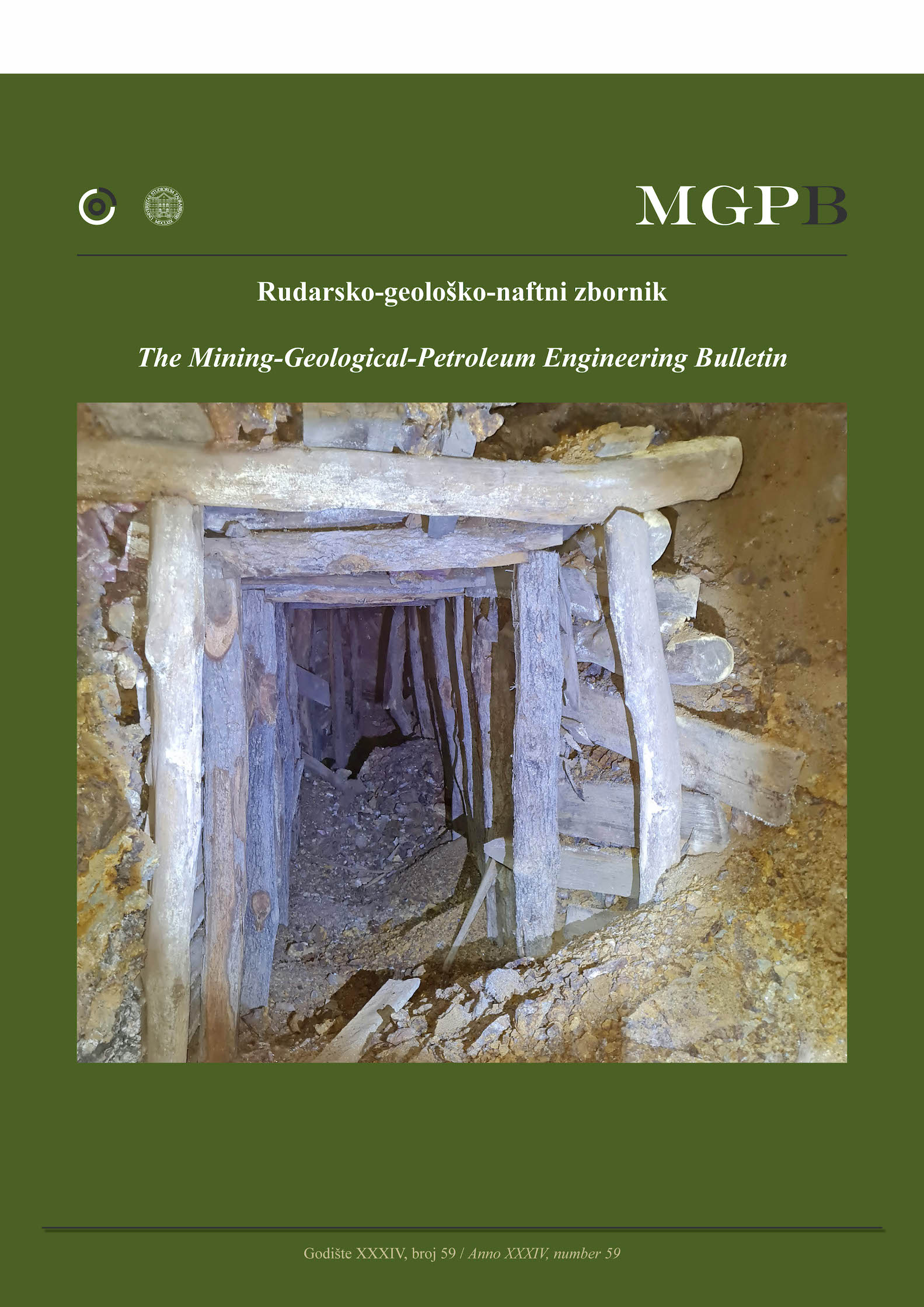A new empirical approach to estimate the ratio of horizontal to vertical in-situ stress and evaluation of its effect on the stability analysis of underground spaces
DOI:
https://doi.org/10.17794/rgn.2022.3.8Keywords:
In-situ stress, displacement, strain, stability analysis, underground spaceAbstract
In-situ stress is one of the most important input data to study stability analysis of underground and surface geomechanical projects. The measured vertical stress has a linear relation with depth. The average value of unit weight () was obtained 0.026 MN/m3 (2.56 ton/m3) using 1041 test results of different rocks with 0.001 difference with 0.027 MN/m3 that is a reliable coefficient for estimating vertical stress. The ratio of horizontal (h) to vertical (v) stress (Kh/v) is estimated by theoretical and empirical methods. The results showed that the estimating ratio of horizontal to vertical stress (K) by the theoretical method such as Terzaghi and Richard is much smaller than 1, and the estimation of K value utilizing empirical methods such as Hoek and Brady is much greater than 1, and even its value approaches to 4 in the near ground surface. To overcome the lack of an applicable comprehensive relation for estimation of the K ratio and improve upon the shortcomings of previous methods, a new empirical relation was developed to estimate the K ratio utilizing a significant number of in-situ test results. Stability analysis of Masjed Soleyman powerhouse caverns was carried out by numerical modelling for five values of K ratio obtained by previous stress estimation methods and this study. The in-situ stress estimation method (K ratio changes) showed a significant effect on stresses, displacements, strains, depth of the plastic zone and significantly affect the stability analysis and support system design of the powerhouse and transformer caverns.
Downloads
Published
How to Cite
Issue
Section
License
Copyright (c) 2022 authors and journal

This work is licensed under a Creative Commons Attribution 4.0 International License.
Creative Commons-BY
Authors who publish with this journal agree to the following terms:
In agreeing this form, you certify that:
- You read the ethical codex of the RGN zbornik available at journal web.
- You submitted work is your original work, and has not previously been published and does not include any form of plagiarism.
- You own copyright in the submitted work, and are therefore permitted to assign the licence to publish to RGN zbornik.
- Your submitted work contains no violation of any existing copyright or other third party right or any material of an obscene, libellous or otherwise unlawful nature.
- You have obtained permission for and acknowledged the source of any illustrations, diagrams or other material included in the work of which you are not the copyright owner.
- You have taken due care to ensure the accuracy of the work, and that, to the best of your knowledge, there are no false statements made within it.
- All co-authors of this submitted work are aware of, and in agreement with, the terms of this licence and that the submitted manuscript has been approved by these authors.
Publication licence
You retain copyright in your submitted work, according to journal license policy (CC-BY). By signing this form you agree that RGN zbornik may publish it under the publication licence. In summary the licence allows the following:
Anyone is free:
- To copy, distribute, display, and perform the work.
- To make derivative works.
Under the following conditions:
- The original author must always be given credit.
- The work may not be used for commercial purposes.
- If the work is altered, transformed, or built upon, the resulting work may only be distributed under a licence identical to this one.
Exceptions to the licence
In addition to publishing the work printed under the above licence, RGN zbornik will also enable the work to be visible online.
The journal editorial can change the licence rules anytime but it cannot retroactively restrict author(s) rights.


